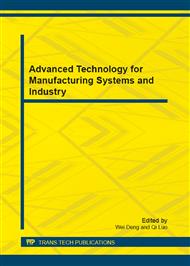[1]
Policy Statement on Guidance for Determination of System, Hardware, and Software Development Assurance Levels on Transport Category Airplanes, Federal Aviation Administration, U.S. Department of Transportation, January 15, (2004).
Google Scholar
[2]
SAE ARP4754A Guidelines for Development of Civil Aircraft and Systems, society of automation engineer, (2010).
Google Scholar
[3]
Bone, M.A.; Cloutier, R.; Korfiatis, P.; Carrigy, A., System architecture: Complexities role in architecture entropy, proceedings of 2010 5th International Conference on System of Systems Engineering (SoSE), 2010 , Page(s): 1 - 6.
DOI: 10.1109/sysose.2010.5544089
Google Scholar
[4]
Rajsuman, R. Open architecture test system: system architecture and design, Test Conference, 2004. Proceedings. ITC 2004. International, 2004 , Page(s): 403 – 412.
DOI: 10.1109/test.2004.1386976
Google Scholar
[5]
Griessnig, G.; Mader, R.; Steger, C.; Weiss, R. Design and Implementation of Safety Functions on a Novel CPLD-Based Fail-Safe System Architecture, 2010 17th IEEE International Conference and Workshops on Engineering of Computer Based Systems (ECBS), 2010 , Page(s): 206 – 212.
DOI: 10.1109/ecbs.2010.29
Google Scholar
[6]
Parise, G.; Martirano, L.; Sutherland, P.E.; Saporita, V.; Neeser, D. Natural and prospective parameters modeling architecture of electric power systems, Conference Record of the Industry Applications Conference, 2002. 37th IAS Annual Meeting. 2002 , Page(s): 2209 - 2215 vol. 3.
DOI: 10.1109/ias.2002.1043839
Google Scholar
[7]
Fang Yan; Jianzhong Yang; Peng Wang, Study of Safety Design of Avionics Software in Civil Aviation, 2010 International Conference on Intelligent System Design and Engineering Application (ISDEA), 2010 , Page(s): 425 - 429.
DOI: 10.1109/isdea.2010.385
Google Scholar
[8]
Peralta, J.; de Leon, F.; Mahseredjian, J. Assessment of errors introduced by common assumptions made in power system studies, 2011 IEEE Power and Energy Society General Meeting, 2011 , Page(s): 1 - 8.
DOI: 10.1109/pes.2011.6038966
Google Scholar
[9]
Bak, S.; Chivukula, D.K.; Adekunle, O.; Mu Sun; Caccamo, M.; Lui Sha, The System-Level Simplex Architecture for Improved Real-Time Embedded System Safety, 2009 15th IEEE Real- Time and Embedded Technology and Applications Symposium, 2009 , Page(s): 99 – 107.
DOI: 10.1109/rtas.2009.20
Google Scholar


